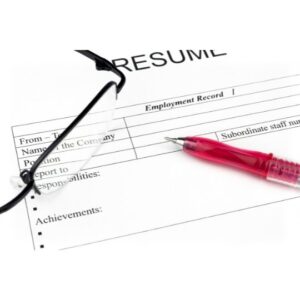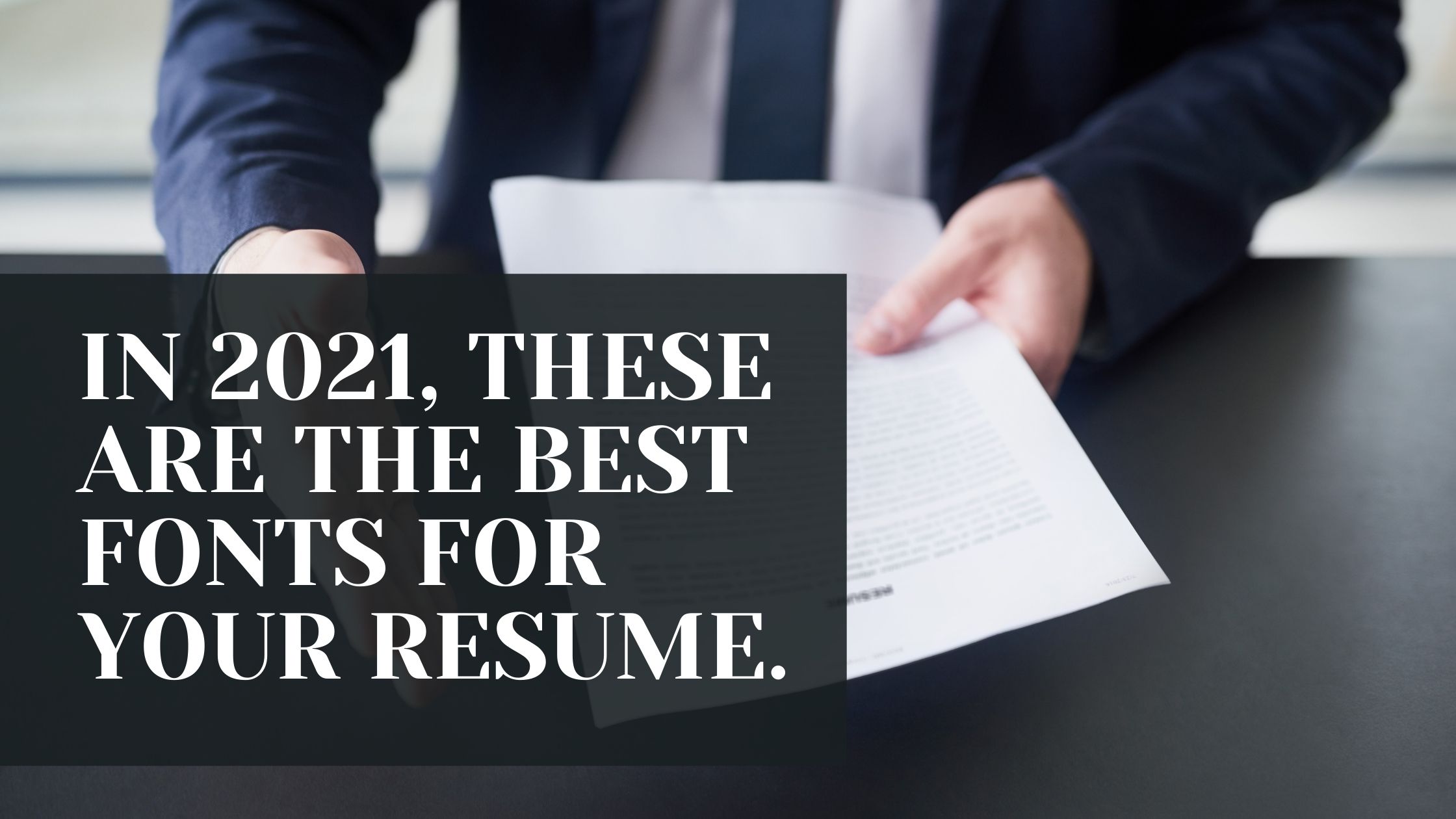BEST FONTS-JUNE 1, 2021 THESE ARE THE BEST FONTS FOR YOUR RESUME IN 2021 725 AUSTIN BELCAKTHESE ARE THE BEST FONTS FOR YOUR RESUME IN 2021 725
SHARES
Facebook18LinkedIn45Twitter41GmailPinterest621
When it comes to creating the ideal resume to land your dream job, you’re likely to consider everything but the font. However, font is an important aspect of making a good first impression on recruiters and employers.
In this article, I’ll show you how to choose the finest fonts for your resume (and when to use each). We’ll also discuss why font selection is important to companies and how you can utilise it to differentiate yourself from the competition.
What is business growth and why is it important?
Does the font on your resume make a difference?

Consider a commercial for a slim, ultra-thin cell phone. What style and font do you envision for your marketing materials?
You most likely imagined something as slim and compact as the phone. If a marketing team is aiming to convince clients to think skinny, you wouldn’t expect them to employ anything flowery, ornate, or thick and bold:
Right? You didn’t think of something classic and basic, did you? You’d certainly expect a font with a few flourishes and curlicues if you’re going to dive into a fairy tale cosmos full of dragon-slayers and towering castles.
Font selection is an important aspect of every marketing team’s design. Every component of an advertisement’s design, from the images to the layout to the placement of the words on the page, should entice a potential buyer to think positively about the product or service being offered.
Consider yourself a one-person marketing team while writing your resume. With your cover letter and CV, you’re creating a first impression for the recruiter or employer. From content to timeliness and structure, you’re marketing yourself in every facet of your self-branding.
When your name appears on an employer’s desk or in their inbox, you want them to remember you positively! They aren’t seeing you in person, and there are no additional background signals to give them any other thoughts than what you convey to them–even something relatively little like format or typeface. It will make a lot bigger effect than you might think because everything they see about you will be written in your selected font!
You’re not required to accept my word for it. Font impacts consumers’ views of a product or organisation, as well as employers’ perceptions of job seekers, according to scientific evidence:
Respondents in a Wichita State University research, for example, identified fonts like Times New Roman and Arial with stability. In the minds of the participants, Courier New and Georgia represented “mature,” while Agency FB was connected with rigidity and Kristen represented excitement.
According to some sources, it’s not just the font choice that makes a difference, but the consistency of that choice with other areas of marketing. If the font and other visual and tonal elements (such as resume design, formatting, paragraphs, graphics, and bold and italics style choices) all convey the same consistent message — such as “this applicant has the relevant skills,” “this applicant is reliable and dependable,” or “this applicant is creative and visually-oriented” — that message is more likely to stick in the reader’s mind. However, if just one element, such as typeface, is incorrect, it can detract from the overall message, undermining every component of your introduction.
Keep in mind that the manner you display your resume and cover letter together is a means for you to brand yourself. You’re much more likely to make a sale–or, in this example, a donation–if your brand messaging is consistent across design and content, form and function, typeface and tone.
7 steps to write the perfect vision statement
What’s All the Fuss About Resume Fonts?

So, why can a seemingly insignificant detail like font choice have such a significant impact on your potential to land a job?
Every second, our brains form connections, working overtime to make sense of what we read and see. Certain aesthetics and words are associated with emotions, personality traits, and moods.
Consider this: If you walked to a fresh fruit smoothie business and found grungy, gritty, gloomy décor, you’d be perplexed. That’s because, based on your previous experiences, you’re likely to connect smoothie businesses with breezy, tropical settings and bright, cheerful colours.
“Typography is the detail and presentation of a tale,” typeface designer and novelist Cyrus Highsmith told The Week. It represents the voice of a certain mood or historical context. It’s capable of a wide range of tasks.”
Consider your resume’s typography as a mood-setter; rather than lighting a candle, you’re setting the tone with the aesthetic of your typeface and other design choices.
In everything we do, we carry our past experiences and a plethora of associations. Your resume font should elicit those associations in the minds of recruiters and potential employers, prompting them to associate you with qualities such as professionalism, honesty, and skill.
Each font, like each candidate, has a distinct “personality.” If a typeface is difficult to see or doesn’t reflect the job you’re asking for, it may leave a bad taste in the recruiter’s mouth (even if they don’t realise it). Because you’ve already put so much care and effort into your resume, you don’t want something as little as font choice to detract from it.
What Fonts Should You Avoid Using on Your Resume?

I’m sure you’ve come across a typeface or two that can make even the best-written résumé appear amateurish.
For example, you’re probably well aware that a fun typeface like Comic Sans should be avoided. However, there are a couple fonts to avoid that aren’t as evident. So, let’s have a brief look at them.
The font is Times New Roman. I’m sure you’re familiar with this popular typeface. It’s also fine for letters and college papers in most cases. But what about resumes? Not at all. This font should only be used for contracts and reports.
Arial. Almost everything I just said about Times New Roman applies to Arial as well. It’s fine, but with so many other wonderful options, it may become monotonous.
Courier. Here’s another popular one that appears to be in good working order. However, the spacing between characters in this font is fixed. For resumes, this can make it appear overly boxy or robotic.
Futura. This is another font that, at first glance, appears to be acceptable. Nonetheless, it should be avoided. For a text-heavy document like your resume, its circular shape is a little too fancy.
Papyrus. This typeface has a lot of personality, which is a little too much for a CV. I wouldn’t propose employing it because it would be distracting to a hiring manager.
We’ll then go over how to use your resume typography to make the best possible impression.
Once you’ve decided on a typeface, you can use my free resume generator to generate a visually appealing, ATS-friendly resume that delivers results. It will not cost you anything:
